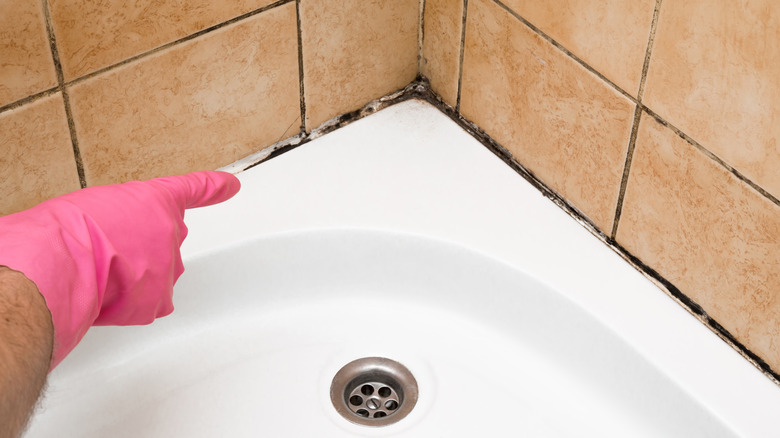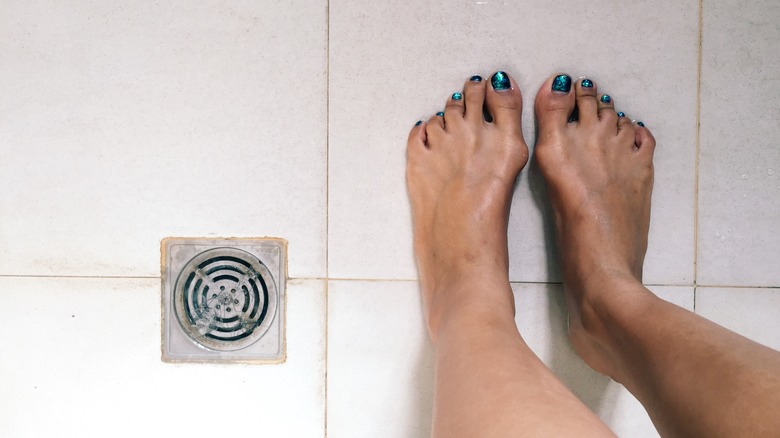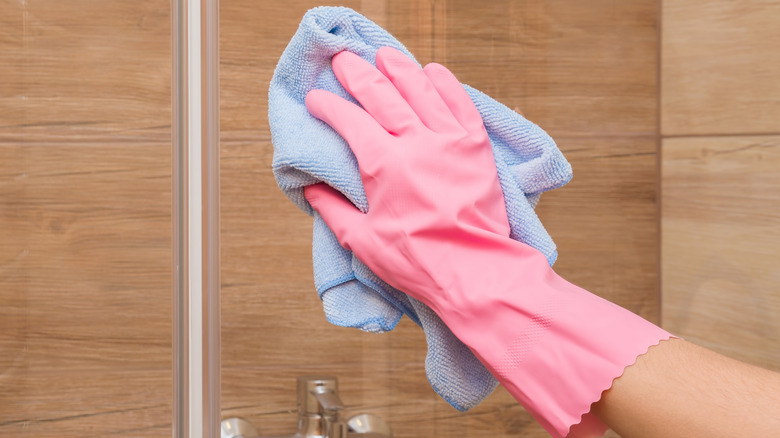Not Cleaning Your Shower Affects You Health More Than You Think
As the old nursery rhyme goes, "Scrub-a-dub-dub, we're sitting in the tub." While these lyrics are a fun way to get young children amped up for a thorough washing, have you ever stopped to think how often we should be scrub-a-dub-dubbing the tub itself?
Unfortunately, the soap that cycles down the drain during the course of a shower is not enough to cleanse the bathtub itself. In fact, that watery mix of dirt, oils, and dead skin we're washing away is contributing to some pretty gross buildup in our showers. Showers are primed for mold and bacterial growth due to their dampness and humidity. Lingering soap residue and staining around the drain are evidence of the presence of pathogens and other microbes. However, drains aren't the only home to bacteria — bathmats, shower curtains, walls, showerheads, and faucets are other places microorganisms can be found hiding.
Exactly how often should we be sanitizing our shower? For those of us who aren't, are there health risks in letting bacterial buildup continue?
Upper respiratory infections can come from an uncleaned shower
While the bacteria and mold found in showers generally does not pose significant risk to most, those with compromised immunity or pre-existing health conditions are more susceptible to illness from an unclean shower. Such individuals are more prone to asthma attacks, allergic reactions, or upper respiratory infections from the presence of mold and bacteria.
Even for healthy adults, regular shower cleaning should not be neglected as there are still potential health risks. Skin conditions such as warts or athlete's foot can be transferred through shower surfaces, particularly if you share your shower with others who may have these infections. "The most serious common infection that you can acquire from a shower is MRSA, or methicillin-resistant staphylococcus aureus," dermatologist Dr. Emily McKenzie told the University of Utah. "This can cause abscesses in the skin that may require treatment with antibiotics or surgical drainage."
How to properly clean and sanitize your shower
You can also come in contact with bacteria lurking in your showerhead, which is released into the air when running the water. Not only do shower parts pose potential health risks, but the items within your shower may be a source of contamination as well. A 2018 study conducted by researchers at the Swiss Federal Institute of Aquatic Science and Technology found that 80% of children's bath toys, such as rubber ducks, are often rife with bacteria on the inside. This is caused by a combination of dirty bathwater and the plastic makeup of the toys themselves.
To reduce the chance of illness for you and your family members, it's important to clean your shower walls, floors, and showerheads on a weekly basis. Walls and floors can be washed and sanitized with mild soap and a scrub brush, followed by a disinfectant spray. Showerheads can be disinfected using boiling water. However, a deeper-level clean should be issued yearly by taking it apart and soaking it in a diluted disinfectant mixture, and scrubbing the inside with a toothbrush. Bathmats, shower curtains, and liners can be run through the washing machine once a month.



